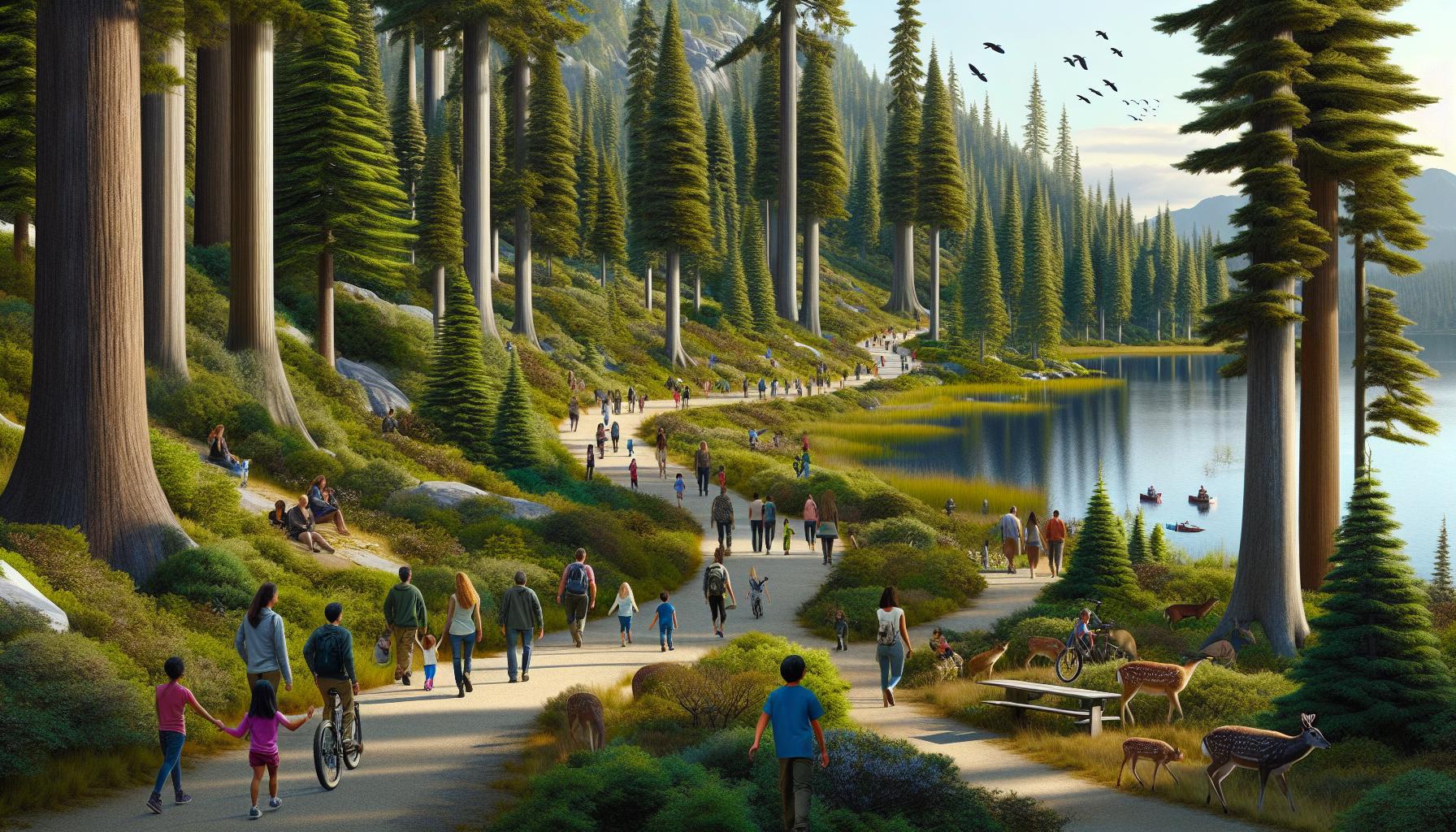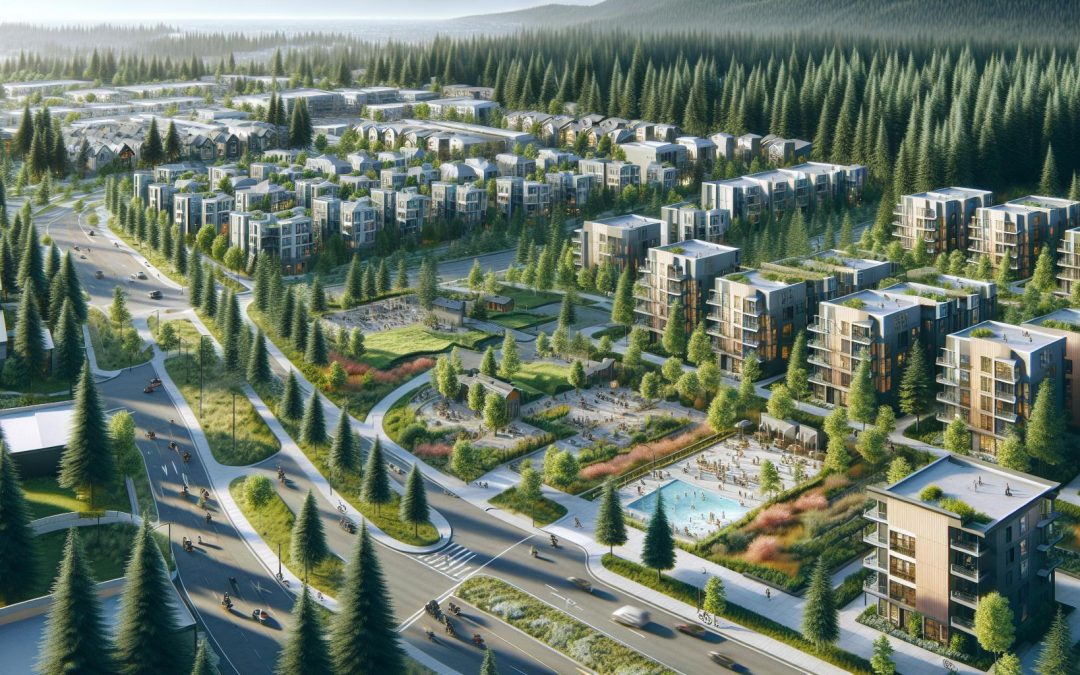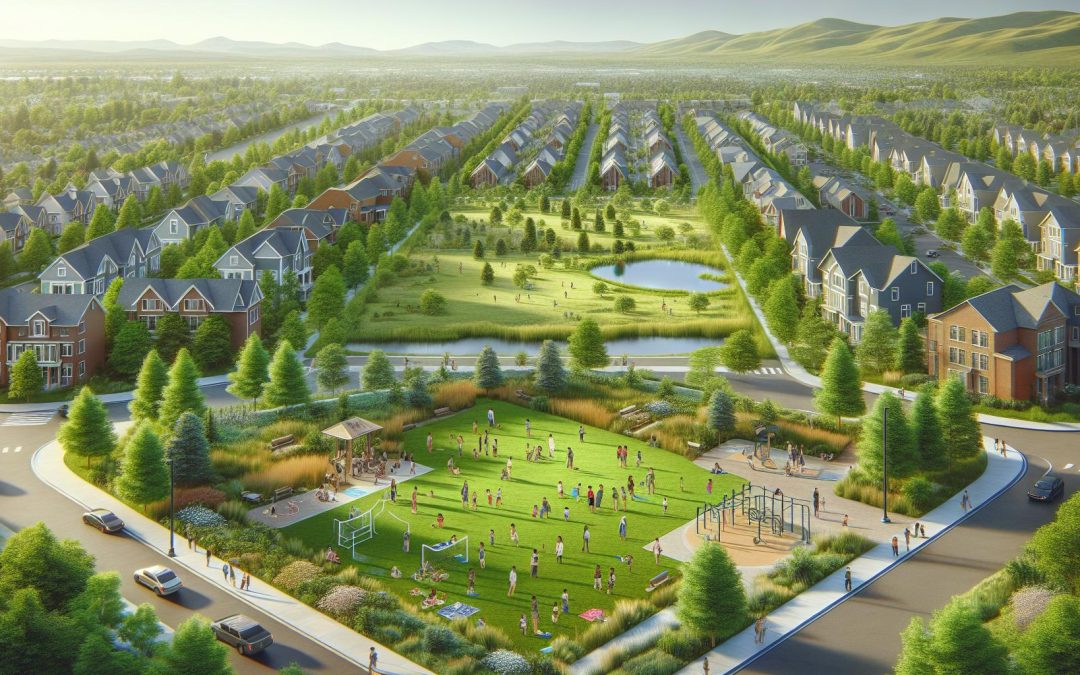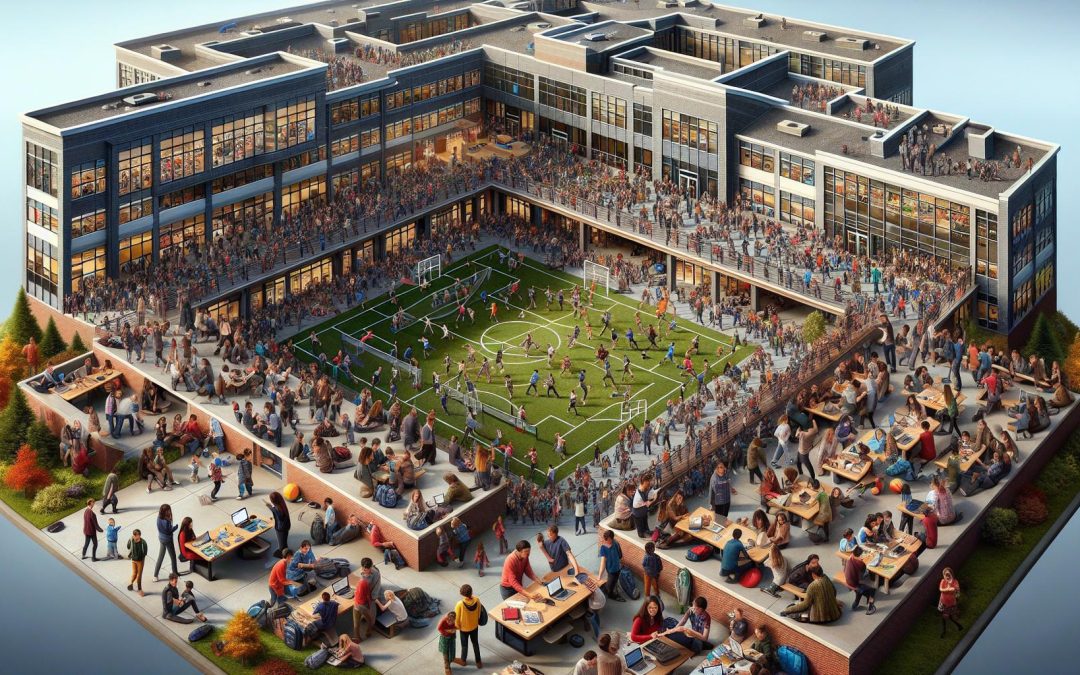Nestled in the heart of Washington State, the Sammamish Plateau is a gem that blends natural beauty with a vibrant, growing community. When I first set foot on its lush trails and gazed at the serene lakes, I felt an immediate connection to the land. It’s not just the breathtaking scenery that draws people in; it’s the sense of tranquility and belonging.
Over the years, the Plateau has seen a surge in population as more folks discover its charm. Families, young professionals, and retirees alike are flocking to this picturesque area, eager to be part of its evolving story. With its rich mix of outdoor adventures and a close-knit community vibe, the Sammamish Plateau offers something for everyone.
Overview Of The Sammamish Plateau
The Sammamish Plateau sits in King County, Washington, between Lake Sammamish and the Snoqualmie River Valley. This elevated landform covers approximately 14 square miles and includes parts of the cities of Sammamish, Issaquah, and Redmond. The Plateau boasts a mix of rolling hills, lush forests, and scattered residential areas, creating a picturesque landscape that’s both inviting and impressive.
The Plateau’s elevation ranges from around 200 feet along the shores of Lake Sammamish to over 500 feet at its highest points. This elevation contributes to the region’s moderate climate, with mild summers and cool, wet winters. The area’s abundant natural features include Beaver Lake, Pine Lake, and several smaller bodies of water that enhance its ecological diversity.
The Sammamish Plateau is home to a variety of wildlife, including deer, coyotes, and numerous bird species. These animals thrive within the Plateau’s green spaces and protected areas, which cover thousands of acres. People often spot bald eagles, great blue herons, and red-tailed hawks soaring overhead. This rich biodiversity provides endless opportunities for nature enthusiasts and bird watchers.
The region has experienced significant growth, with the population increasing steadily over the last few decades. Key data highlights this trend:
| Year | Population |
|---|---|
| 2000 | 34,104 |
| 2010 | 45,780 |
| 2020 | 65,892 |
Families, professionals, and retirees flock to the area attracted by the top-rated schools, recreational amenities, and strong sense of community. Sammamish, in particular, boasts several parks, including Pine Lake Park and Beaver Lake Park, which offer residents ample space to enjoy outdoor activities.
Retail and dining options have expanded, supporting the growing population. The Plateau now features a variety of shopping centers, restaurants, and cafes that cater to diverse tastes and preferences. With close access to major highways and transportation hubs, commuting to nearby cities like Seattle and Bellevue becomes convenient for residents.
Numerous trails crisscross the Plateau, integrating seamlessly with the natural landscape. Popular spots include the Soaring Eagle Regional Park and the East Lake Sammamish Trail, which stretches nearly 11 miles along the shoreline. Hikers, cyclists, and joggers regularly use these trails, enjoying the stunning views and tranquil atmosphere.
Public events and community gatherings regularly occur on the Plateau. Festivals, farmers markets, and outdoor concerts are commonplace, fostering a strong local culture. These activities contribute to the close-knit feeling that many residents cherish.
The Sammamish Plateau’s combination of natural beauty, wildlife, recreational opportunities, and growing amenities makes it a unique and desirable place for diverse residents.
Natural Beauty And Ecology
The Sammamish Plateau’s natural beauty and rich ecology make it an outdoor paradise. Its diverse landscapes and wildlife create unique opportunities for exploration and relaxation.
Flora And Fauna
The Sammamish Plateau is home to a variety of plant and animal species. Majestic evergreens like Douglas Fir, Western Hemlock, and Red Cedar dominate the landscape, offering a lush, green canopy year-round. Underneath these towering trees, you’ll find an array of ferns, salal, and mosses thriving in the moist, temperate climate.
Wildlife is abundant here. Deer frequently roam the forests and neighborhoods, while coyotes are commonly seen in the early mornings. Numerous bird species make the Plateau their home; Bald Eagles and Great Blue Herons are particularly striking. Smaller creatures like squirrels, rabbits, and various amphibians add to the rich biodiversity.
Salmon also play an essential role in the local ecology. Native streams provide critical spawning grounds for these fish, sustaining the ecosystem. Overall, the flora and fauna of the Sammamish Plateau contribute to its vibrant natural charm.
Parks And Trails
The Sammamish Plateau offers numerous parks and trails for residents and visitors. Soaring Eagle Regional Park spans over 600 acres, featuring dense forests and winding trails perfect for hiking and horseback riding. Pine Lake Park provides a peaceful setting for picnics, fishing, and swimming with its serene lake and well-maintained facilities.
East Lake Sammamish Trail is a popular route, stretching 11 miles along the eastern shore of Lake Sammamish. This trail is ideal for walkers, joggers, and cyclists, offering stunning lake views. Beaver Lake Park is another gem, offering extensive walking paths, a dog park, and sports fields.
Duthie Hill Park attracts mountain biking enthusiasts with its extensive network of trails catering to various skill levels. These parks and trails not only enhance the Plateau’s natural beauty but also foster a sense of community by providing spaces for recreation and leisure.
Historical Background
Early Settlers
Early settlers of the Sammamish Plateau arrived in the mid-19th century, attracted by its fertile land and abundant resources. Native American tribes, including the Snoqualmie and Sammamish, initially inhabited the area, living off the rich forests, rivers, and lakes. Early European settlers, such as Henry Fenton, established homesteads around 1870. These pioneers built farms, logging operations, and small communities. Initial transportation relied on canoes and horseback until roads were developed over time. Small trading posts and schools soon followed, laying the foundation for developing towns like Issaquah and Sammamish. The area’s early economy centered on logging and agriculture, benefiting from the region’s natural wealth.
Development Over The Years
Throughout the 20th century, the Sammamish Plateau saw significant development. The logging industry continued to thrive, and the construction of roads made the area more accessible. The establishment of the Klahanie community in the 1980s marked a turning point, transforming the Plateau into a suburban hub. Residential neighborhoods, commercial centers, and schools sprouted up, supporting the expanding population. The incorporation of Sammamish as a city in 1999 marked a critical milestone in its growth. Continued infrastructure improvements, including parks and community spaces, have fostered a balanced blend of urban and natural environments. Over the decades, the Sammamish Plateau evolved from a quiet, rural area into a vibrant, flourishing community.
Population Growth
Growth on the Sammamish Plateau continues to surge as it attracts diverse residents. Families, retirees, and young professionals are drawn to the area, enhancing its appeal.
Demographic Changes
The Plateau’s demographic profile has evolved significantly. Between 2000 and 2020, the population almost doubled from 34,104 to 65,892. Increased numbers of young families and professionals have moved in, thanks to excellent schools and job opportunities. Seniors also find the serene environment ideal for retirement.
A closer look at census data reveals that the age distribution has become more balanced over the years. The number of residents under 18 has risen substantially, mirroring the influx of families. Ethnic diversity has also grown, with a marked increase in Asian and Hispanic communities. Educational attainment remains high, with a majority of adults holding bachelor’s degrees or higher.
The influx has led to a robust community vibe. Local schools often land in the top rankings, adding to the area’s allure. The demographic shifts have invigorated local events, fostering a sense of unity among residents.
Urbanization And Infrastructure
Urbanization has transformed the Sammamish Plateau from a rural haven to a bustling suburban area. Housing developments have expanded, particularly in southern and eastern zones. Modern homes, apartment complexes, and townhouses now dot the landscape, catering to varied lifestyle preferences.
Infrastructure projects have enhanced connectivity. Roads like the Issaquah-Pine Lake Road and the 228th Avenue SE Corridor have seen significant upgrades, easing traffic and commute times. Public transportation options have improved, providing reliable alternatives for residents.
Commercial development follows residential growth. New shopping centers, restaurants, and service-oriented businesses have sprung up. Pine Lake Shopping Center and Sammamish Highlands are notable examples. These additions not only offer convenience but also create local jobs, supporting the community economically.
Parks and recreational facilities have expanded. These spaces balance urban growth with nature, preserving the Plateau’s natural beauty while providing residents with leisure options.
Environmental Impact
Conservation Efforts
Conserving the natural beauty of the Sammamish Plateau has always been a priority for residents and local authorities. Key conservation efforts focus on preserving green spaces and protecting native wildlife. The city collaborates with organizations like the King County Conservation District to implement sustainable practices.
Tree preservation ordinances ensure that development projects maintain the Plateau’s lush forest cover. Restoration projects at local lakes, such as Beaver Lake and Pine Lake, aim to improve water quality and habitat for aquatic life. Educational programs in schools raise awareness about environmental stewardship among young residents.
Green initiatives, including community-based recycling programs, significantly reduce waste and promote sustainable living. Public transit investment aims to lower vehicle emissions, supporting cleaner air. Community-driven projects, like neighborhood clean-ups, foster a sense of responsibility and environmental consciousness.
Challenges And Solutions
Despite successful conservation efforts, the Sammamish Plateau faces several environmental challenges. Rapid urbanization strains local ecosystems and increases pollution. Housing developments often lead to habitat loss for native species. To combat this, stringent zoning laws help control overdevelopment and protect critical habitats.
Water management issues arise due to increased demand. Local authorities implement rainwater harvesting systems and promote drought-resistant landscaping to minimize water usage. Stormwater runoff, a significant pollution source, is mitigated through green infrastructure like rain gardens and permeable pavements.
Balancing population growth with environmental sustainability is an ongoing challenge. Sustainable urban planning incorporates green building standards, ensuring new constructions are energy-efficient. Public awareness campaigns encourage eco-friendly practices among residents. By addressing these challenges proactively, the community continues to safeguard its natural wonder while accommodating growth.
Conclusion
Living on the Sammamish Plateau has been an incredible experience for me. The blend of natural beauty and a vibrant community makes it a truly special place. From the lush trails to the serene lakes, there’s always something to explore and enjoy.
The growing population has brought new energy and diversity, enriching our local culture and making it even more welcoming. It’s heartening to see how we’ve maintained a balance between development and conservation, ensuring that our natural wonders remain protected.
As we continue to grow, I hope we’ll keep fostering a sense of unity and environmental stewardship. The Sammamish Plateau is more than just a place to live – it’s a community that cares deeply about its surroundings and each other.





0 Comments